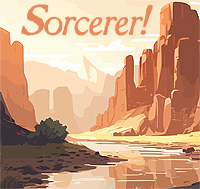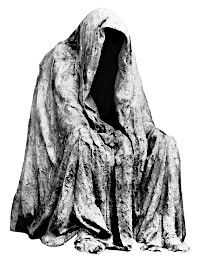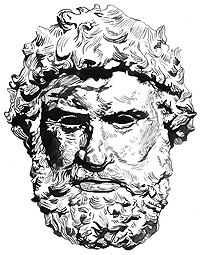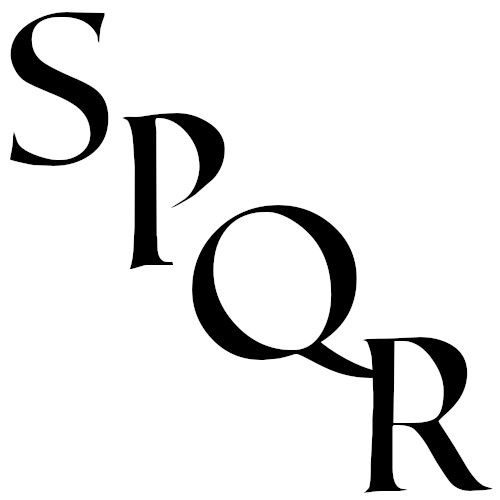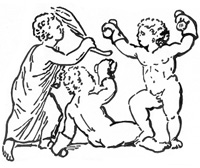The Bible: 2006, Ignatius Edition, Revised Standard Version
New Testament 1946
Old Testament 1952
The Apocrypha 1957
Catholic Edition 1965, 66 [Maccabees]
The Standard Bible was an American edition of 1901, revising the 1611 King James edition [called the Authorized Version], revised again in 1937. These books were published subject to an agreement between the Catholic Biblical Association of Great Britain and the Standard Bible Committee and the Division of Christian Education of the National Council of the Churches of Christ in the United States of America.
I am working from a Catholic Bible with translations revised as per the listings above, which is to say a book with 68 lesser books, including The Maccabees 1 and 2. As with the complete Book of Enoch, preserved only in the Coptic Bible, Maccabees seem to have been excluded from the standard Orthodox and subsequent Protestant versions of the Bible at the Council of Nicea, A.D. 371-2. Constantine had moved the center of Roman rule to the Greek East and oversaw the council of squabbling bishops who had to decide what to include and exclude from the Bible. Like Enoch, which reads very much like a Nordic Revelations, Maccabees is explicitly anti-Greek. This is the most likely reason for the these books’ exclusion, as the Gospels and Revelations were composed much later.
I prefer The King James version and Catholic versions revised before 1967. The treatment of ancient texts from the 1611 The King James, and the ideological corruption of the 1960s, permits a more accurate view of Antiquity, an antiquity not yet enslaved in the mirror of our modern ideological hubris.
The symbolism upon the cover is mixed with that of the Word. The book is bound in crimson and imprinted in gold: the Blood of the Crucified Christ promising to return mankind to a Golden Age, a time of peaceful perfection, from which the general view of the Christian notion of Heaven seems to be drawn.
Central, within a golden circle, is Jesus in very Nordic form, not dissimilar from depictions of Zeus and later descriptions of Mohamed. His head radiates a halo or nimbus within which a crucifix and his neck form four cardinal spokes of the holy wheel. The right arm of the cross is inscribed with an A, the left with an M, and heaven most an I. In the crook of his left hand Christ holds an open book, the text on the two open pages indicated by the right hand held in the attitude of blessing with fore and index finger raised and the thumb touched by the two small fingers:
“I am the light of the world. He who follows me will not walk in darkness, but will have the light of life.”
The other four images are a quarter of the size of the central and are alike in circles.
The cover art is attributed to Christopher J. Pelicano and is titled The Four Evangelists.
Top Left is a winged angel, with halo, clothed in priestly vestments and holding draped over the wrists of his outstretched arms a priestly sash. While Christ has but one pony tail of braided hair, this being has two and appears of indistinct gender.
Top Right is a winged lion, its mane enclosed in a halo. This ancient symbol of kings holds open a scroll of enlightenment.
Bottom Left is a winged bull, its horns wreathed in halo, likewise offering a scroll of enlightenment. This images evokes the Bull of Heaven from the Epic of Gilgamesh and is the primary cult image of Zeus at sacred agons. More importantly, the bull is the Aryаn image of dominance over grain cultures.
Bottom Right is an eagle, with its scrutinizing countenance wreathed in halo and its right forewing holding close a scroll of enlightenment. The eagle was the chief totemic bird of Zeus.
References to the Cherubim, or Cherubs, in the Bible indicate a second order of angel, winged beings, often depicted after the fashion of Cupid, the pagan minor god of love who served Venus/Aphrodite/Ishtar, Goddess of Love. These Cherubs, sometimes depicted boxing in Latin art, variously guard sacred precincts and hold divine inspiration for dispensing to worthy holy men. I am interested, in case a philologist is reading, if Child, Chubby and Cherish have their word origin with the Cherub.
Angel comes from the Greek for Messenger and, according to more recent Christian convention is merely an expression of God’s will, akin to the Bad Dream that Zeus sends to inform Agamemnon. However, even this Bad Dream, is spoken to by Zeus, is a preexisting entity employed as a messenger. The angel is more traditionally seen as a servant that waits on or “attend God” to do his bidding, acting as his intermediary agents with mankind.
Such is the nature of the pleasing tome, set in readable spaced type and.



